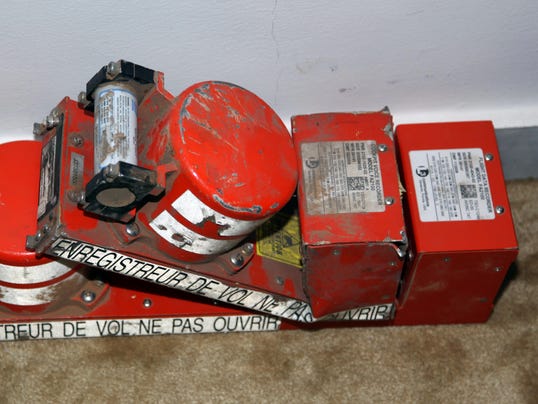
In a response to recent incidents in which large commercial airliners have vanished into oceans, the National Transportation Safety Board is calling for new regulations requiring all passenger planes that fly over large bodies of water to be equipped with more sophisticated flight tracking technologies.
The NTSB recommendations come less than two weeks before international aviation authorities meet in Montreal to debate new flight tracking standards, in the wake of the disappearance on March 8 of a Malaysia Airlines jet.
Aviation authorities believe MH flight 370, a Boeing 777 with 239 people on board, turned dramatically off its course from Kuala Lumpur to Beijing and crashed somewhere in the south Indian Ocean. Searchers aided by 26 countries have analyzed and mapped 41,000 km of ocean floor, but still, no wreckage has been found.
To prevent such difficult searches in the future, the NTSB recommends planes be equipped with tamper-resistant devices that transmit a plane's location every minute via satellite.
The NTSB is also recommending that the Federal Aviation Administration also require all commercial airlines to equip every plane's flight data and cockpit voice recorders, the co-called "black boxes," with low-frequency underwater beacons with strong signals that are more easily detected by searchers.
The NTSB also wants the FAA to require longer lasting batteries on the beacons, so that signals can be detected for at least 90 days after a crash. Currently, batteries are required to last at least 30 days.
"Technology has reached a point where we shouldn't have to search hundreds of miles of ocean floor in a frantic race to find these valuable boxes," said NTSB Acting Chairman Christopher Hart in a statement. "In this day and age, lost aircraft should be a thing of the past."
Among the other recommendations from the government agency that investigates plane crashes and other transportation disasters in the U. S., is that flight data and voice recorders, be designed so that they cannot be disabled. Among the theories in the disappearance of MH 370 is that a member of the flight crew or someone else in the cockpit disabled the devices before the plane veered off-course.
The NTSB also wants cockpit video recorders required on all planes, so that images of the cockpit in the last several minutes before an incident can be preserved.
NTSB investigators have been recommending video recorders for 15 years, citing a number of incidents in which pictures of the controls or video of the pilots' actions could have helped clarify what may have caused a crash.
But airline pilots unions have opposed video recorders in the cockpit, citing privacy concerns, and saying that that video images could be misinterpreted and misused.
Air Line Pilots Association President Tim Canoll calls the recommendation for cockpit video recorders "a premature overreaction ... that will not improve safety and could, in fact, impede it by diverting limited resources that could be used for more valuable safety enhancements."
And while the technology exists for the other NTSB recommendations, some airlines may balk at the cost of purchasing, installing and implementing such systems.
The NTSB recommendations go far beyond what an airline industry task force is recommending. Industry leaders and global regulators gather in Montreal next month for a meeting of the International Civil Aviation Organization, a agency of the United Nations, to debate and possibly adopt new worldwide standards for tracking passenger flights.
Saturday 24 January 2015
http://www.kpbs.org/news/2015/jan/22/to-keep-planes-from-disappearing-ntsb-urges/




